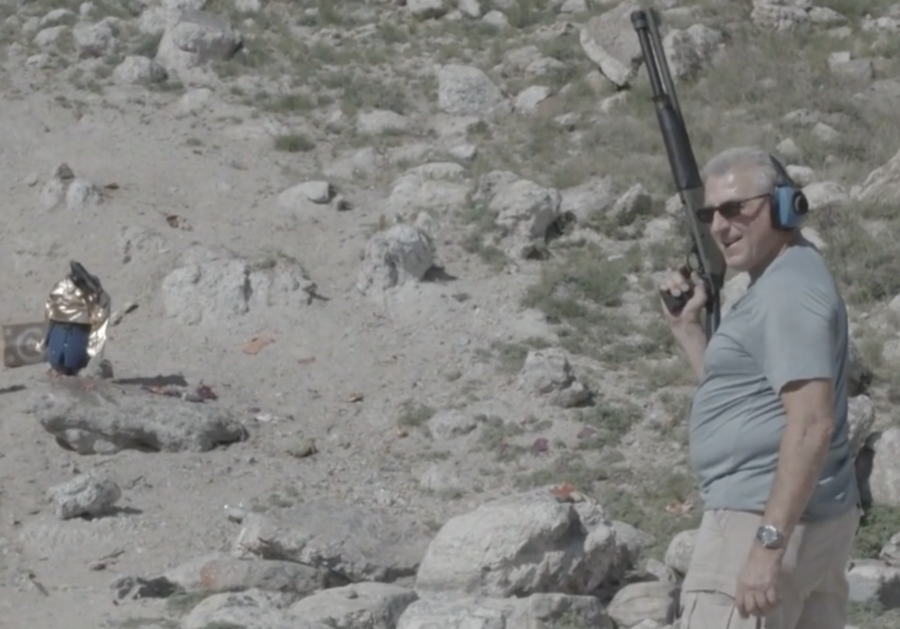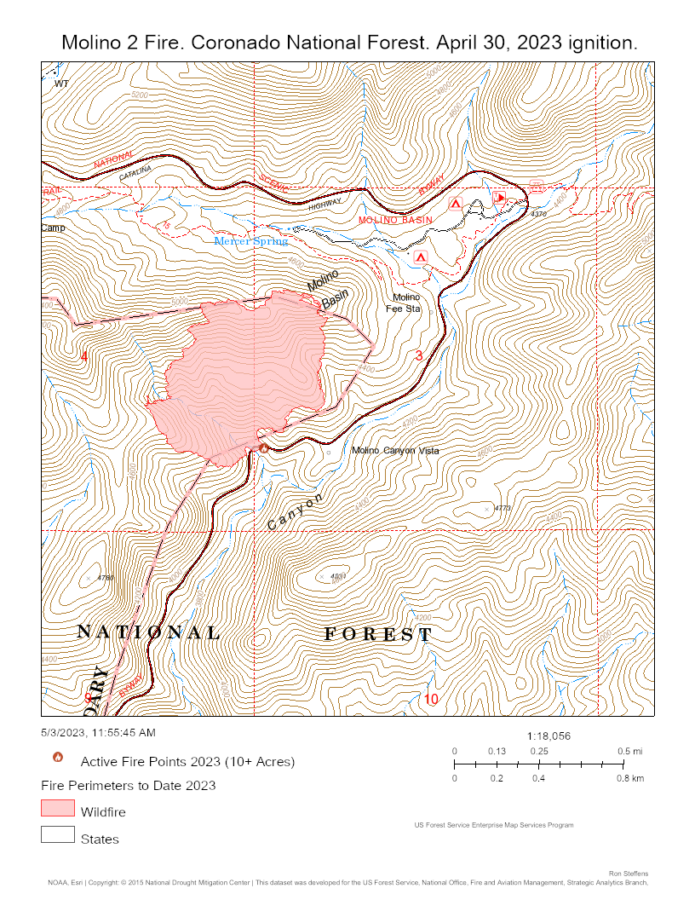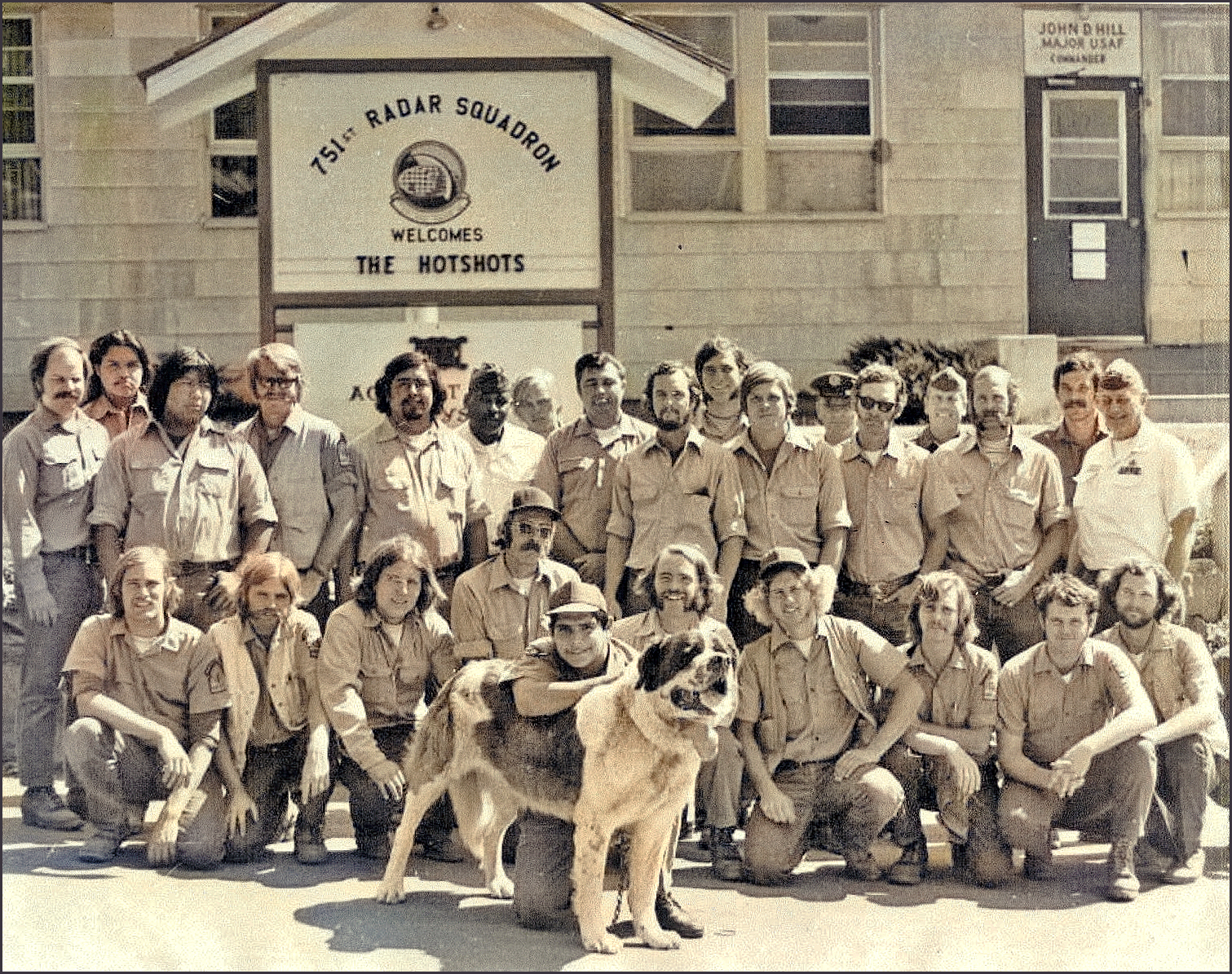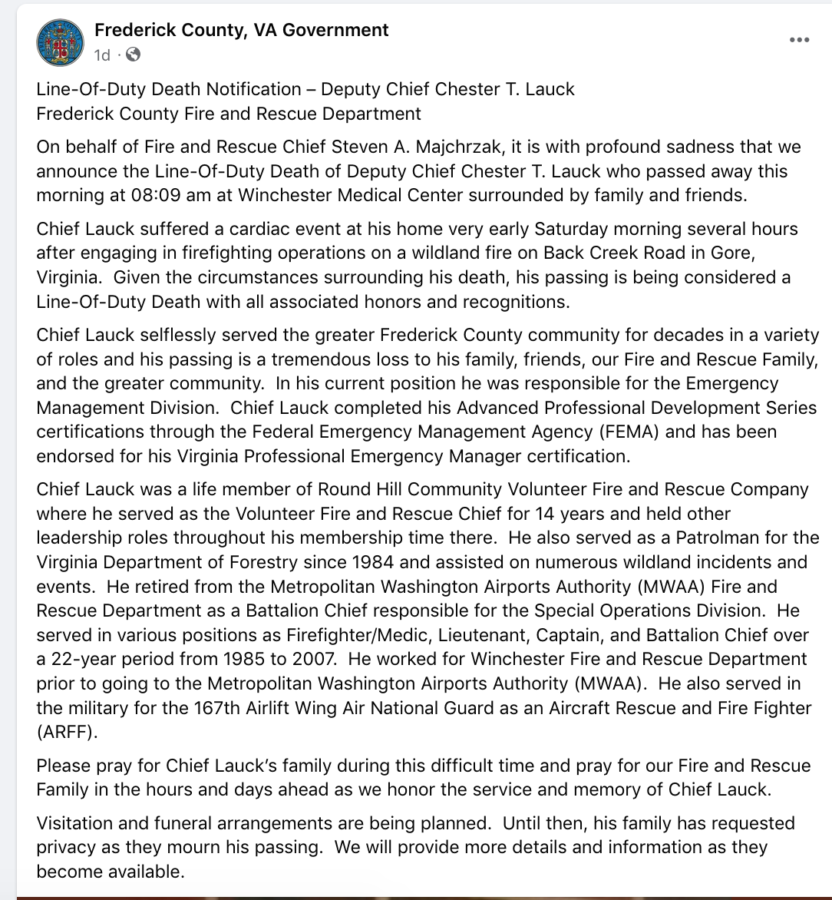05/04/2023 UPDATE: Authorities have identified the shooter suspected of starting the Molino 2 Fire. The fire was started Sunday, April 30 and resulted in the closure of the Catalina Highway in the Santa Catalina Ranger District, Coronado National Forest. Video evidence shows the individual shooting illegal shotgun rounds and the start of the wildfire, according to KOLD-13 News.
Coronado National Forest managers and Forest Service Law Enforcement and Investigations expressed their appreciation to members of the public who provided multiple timely and actionable tips about the identity of the suspect who started the wildfire. Investigators identified, located, and interviewed the irresponsible gun owner, who is apparently shooting incendiary shells from a 12-gauge semiautomatic tactical shotgun with an extended magazine. The case has been referred to the U.S. Attorney’s Office.
~ K.A.
__________________________________
It’s Sunday, April 30, at milepost 4.5 on the Catalina Highway, in a section of the Coronado National Forest that is a recreation gateway for Tucson, Arizona. The day reaches 100 degrees for the first time of the year, and there’s a Red Flag Warning.
Most folks might think that this is not a good day to demonstrate how adept they are at shooting a shotgun at an oddly dressed torso target with what seems to be incendiary shells. Even a worse day to demonstrate this five times, on video.

But the correct decision wasn’t what the unnamed man in the video elected to do. His identity is being sought by Coronado National Forest investigators in connection with the Molino 2 Fire.
The forest shared the video in a media release noting that video evidence was obtained showing the suspect and the start of the Molino 2 Fire. Video footage shows an approximately 50- to 60-year-old, white male wearing a light grey shirt with tan cargo pants approaching the scene where others with a camera were shooting at a homemade target. Upon his arrival, they stepped back and allowed him to take five shots using his own shotgun. It appears in the video the suspect had it loaded with incendiary shells causing sparks to fly and starting the Molino 2 Fire.
The release notes that using incendiary ammo and starting a wildfire are violations of 36 CFR 261.5 (b,c) punishable by up to 6 months in jail and/or $5,000. These violations are considered Class B Misdemeanors. In addition to the fine, some of the cost may be recovered through restitution.
The fire was reported to be contained at 110 acres, with no cost estimate available. The Catalina Highway was closed for a portion of the first day of the fire, causing significant delays of a Sunday afternoon mountain traffic.
The video shows a man who shoots with enough care to wear ear protection. First, he looks back – to recognize the person with the camera, and then he turns and begins what appears to be a very conscious act – as the use of any weapons should be, by ethics and law.
VIDEO: https://youtu.be/cV1hlbXff7Q
In the video embers are visible flying from where the target is hit, bouncing off surrounding rocks. The shooter fires a total of five shells until he empties his shotgun.

At 34 seconds into the video, the camera pans left and focuses on nearly a dozen little spot fires. Within 15 seconds the flamelengths are 2-3 feet high and the spots burn together into three distinct fires at the base of a canyon chute.
The techniques and success of fire prevention are often framed by the Three E’s – Education, Engineering and Enforcement. All three E’s are in place in this section of the Catalina Highway (which I know well, as it leads to some of my favorite hiking and running routes, and I’ve managed fires there in the past). With education having already been ignored by the shooter, and the engineering being crossed (since most of this area is closed and flagged off along the highway), then the third E of enforcement is the last tool left, with a 49-second video to support the case, as well as 110 acres of burnt desert and grassland as evidence.
Anyone with information regarding this incident and the suspected shooter is asked to call 520-388-8343 or email the Coronado National Forest at Mailroom_R3_Coronado@usda.gov







